
The Beyblade Official Handbook is a power-packed, all-in-one guide to the sport, the TV characters, teams, all the Bit Beasts and their fighting styles. It includes trivia, tips and tools to become a serious Beyblade competitor.
Materials from Japan

The Beyblade Official Handbook is a power-packed, all-in-one guide to the sport, the TV characters, teams, all the Bit Beasts and their fighting styles. It includes trivia, tips and tools to become a serious Beyblade competitor.

When the bomb was dropped on Nagasaki, Mieko’s nearby village was turned into ruins, and her hand was badly injured. Mieko loves to do calligraphy more than anything, but now she can barely hold a paintbrush. And she feels as if she has lost something that she can’t paint without-the legendary fifth treasure, beauty in the heart. Then she is sent to live with her grandparents and must go to a new school. But Mieko is brave and eventually learns that time and patience can help with many things, and may even help her find the fifth treasure. Written by the author of Sadako and the Thousand Cranes, Mieko,s story will touch the hearts of all its readers.
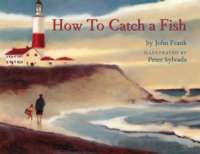
Thirteen linked verses and handsome, mood-drenched paintings show how we catch fish–from New England to the Arctic, to Japan and Namibia and beyond. This lovely picturebook–about fishing, geography, people and customs, and the bond between parent and child fishing together–will appeal to everyone who’s cast a line in the water.
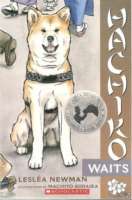
Hachi, an Akita pup, reveres his master and likes nothing more than accompanying Japanese professor Eizaburo Ueno to his morning train and then meeting him in the afternoon. One day the professor dies while at work, yet the faithful Hachi awaits his return at the station every day until his own death some 10 years later. Newman’s fictionalized account of this true story adds a young boy, Yasuo, who befriends the dog and the professor and later cares for Hachi during his steadfast vigil at the Shibuya train station in Japan.
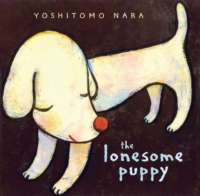
In his first book for children, Yoshitomo Nara tells the charming story of a puppy so large that no one notices him—until a determined little girl climbs high enough to meet him and become his friend.

A young Japanese girl spends the day with her beekeeping father in the mountains where he keeps his hives, learning how bees gather nectar, how it is turned into honey, and how the honey is collected to end up on our tables.

The Kamishibai man used to ride his bicycle into town where he would tell stories to the children and sell them candy, but gradually, fewer and fewer children came running at the sound of his clappers. They were all watching their new televisions instead. Finally, only one boy remained, and he had no money for candy. Years later, the Kamishibai man and his wife made another batch of candy, and he pedaled into town to tell one more story—his own. When he comes out of the reverie of his memories, he looks around to see he is surrounded by familiar faces—the children he used to entertain have returned, all grown up and more eager than ever to listen to his delightful tales.
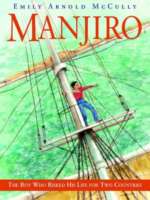
In 1841, Japan had been closed to the outside world for 250 years, and anyone who tried to return to the country after leaving it could be executed. So when the small fishing boat on which 14-year-old Manjiro was working was shipwrecked, he despaired of ever returning to his village. The captain of the American whaling ship that rescued Manjiro took a special interest in him, inviting him to come live in Massachusetts. There, Manjiro was treated like Captain Whitfield’s son, and he began to feel as though Massachusetts was his second home. Still, he never gave up his dream of finding a way to return to Japan and see his mother again. Watercolor illustrations bring to life the true story of a determined and resourceful young man whose intimate knowledge of two cultures later led him to play an important role in the opening of Japan to Western trade and ideas.
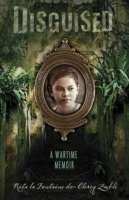
The true story of a girl who posed as a boy during World War II–and dared to speak up for her fellow prisoners of war. With the Japanese army poised to invade their Indonesian island in 1942, Rita la Fontaine’s family knew that they and the other Dutch and Dutch-Indonesian residents would soon become prisoners of war. Fearing that twelve-year-old Rita would be forced to act as a “comfort woman” for the Japanese soldiers, the family launched a desperate plan to turn Rita into “Rick,” cutting her hair short and dressing her in boy’s clothes. Rita’s aptitude for languages earned her a position as translator for the commandant of the prisoner camp, and for the next three years she played a dangerous game of disguise while advocating against poor conditions, injustice, and torture. Sixty-five years later, Rita describes a war experience like no other — a remarkable tale of integrity, fortitude, and honor.
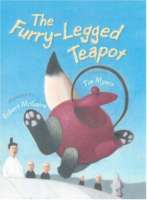
In ancient Japan, a young tanuki, a raccoon dog that can change shapes, becomes stuck in the form of a teapot. Includes notes on the original Japanese folktale from which this story is derived.